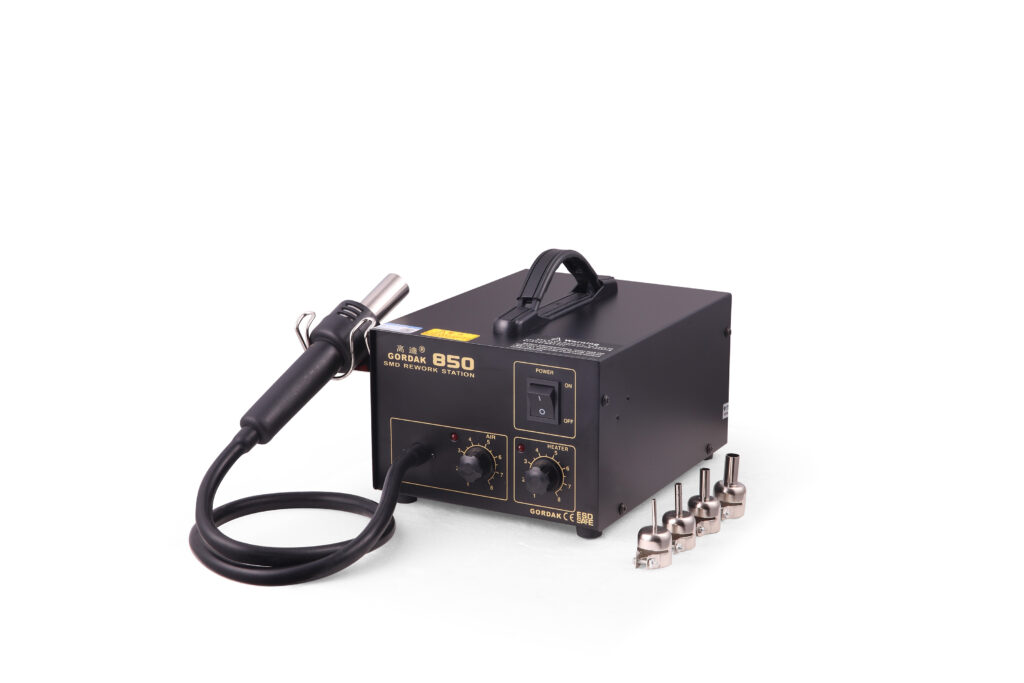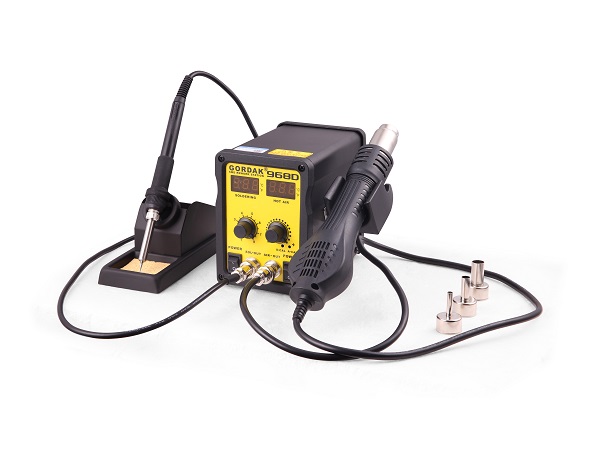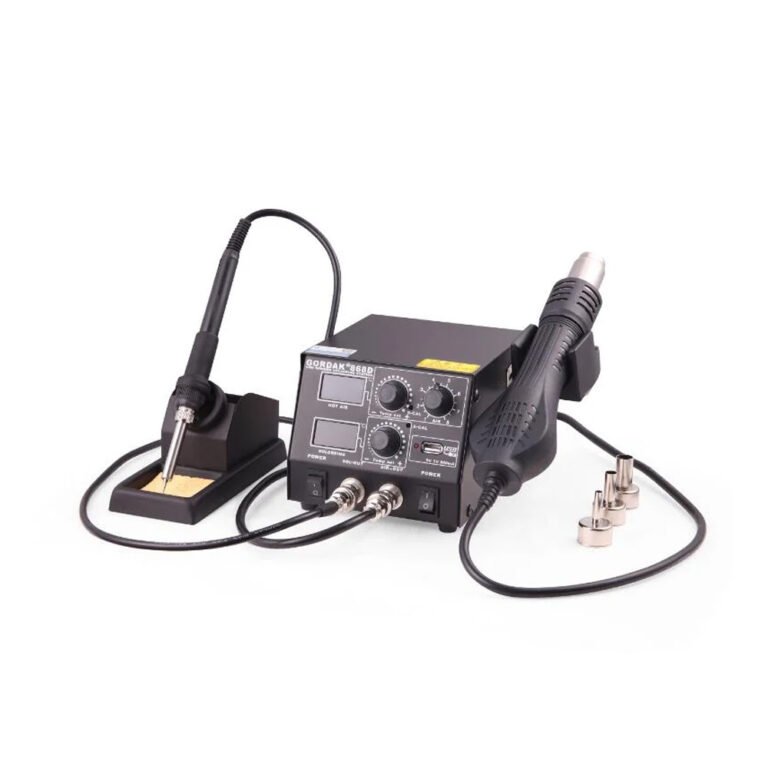When it comes to repairing or reworking surface-mounted components (SMDs), selecting the right rework method is critical. Two popular solutions are hot air rework stations and infrared (IR) rework stations. Both technologies are effective, but they differ significantly in terms of how heat is applied, how components respond, and how suitable they are for various applications.
At Gordak Electric, we specialize in manufacturing high-performance hot air rework stations including models like Gordak 850, 857D, 958D, and more. In this article, we offer a clear comparison to help you understand the pros and cons of each system so you can make an informed decision for your repair or assembly needs.
What Is a Hot Air Rework Station?
A hot air rework station uses a controlled stream of heated air to melt solder and allow the removal or replacement of SMD components. The airflow and temperature can typically be adjusted to suit different component types and PCB materials.
Popular Gordak models include:
Gordak 850 / 850A / 850B – Reliable analog control
Gordak 857 / 857D – Compact and precise
Gordak 958 / 958D – Digital control with intelligent cooling

What Is an Infrared Rework Station?
An infrared rework station uses infrared radiation (non-contact heat) to raise the temperature of the component and surrounding solder joints. It often uses IR lamps or IR emitters as the heat source and is preferred for sensitive or multilayer PCBs.
Hot Air vs. Infrared: A Side-by-Side Comparison
| Feature | Hot Air Rework Station | Infrared Rework Station |
|---|---|---|
| Heating Method | Convection (forced hot air) | Radiant heat (IR light) |
| Heat Distribution | Even, controllable via airflow and nozzle size | Can be uneven due to variations in surface reflectivity |
| Precision | High, especially with focused nozzles | Medium—affected by component color and shape |
| Speed | Fast heating and cooling cycles | Generally slower heating response |
| Setup Complexity | Simple; plug-and-play design | Requires more calibration and placement accuracy |
| Component Safety | May blow away tiny components if airflow is too high | No airflow—safer for small components |
| PCB Compatibility | Excellent for most PCB types | Better for heat-sensitive or multilayer PCBs |
| Cost | More affordable and widely available | Typically more expensive |
| Learning Curve | Easy to learn, beginner-friendly | Steeper learning curve |
| Maintenance | Easy to clean and service | Requires more specialized care |
Pros and Cons Summary
Hot Air Rework Station – Pros
Adjustable heat and airflow
Ideal for most general SMD rework tasks
Interchangeable nozzles for different component types
Affordable and beginner-friendly
Quick heating and intelligent cooling (e.g. Gordak 958D)
Hot Air Rework Station – Cons
Airflow can displace small parts if not properly set
May be less ideal for very heat-sensitive or multilayer boards without preheating
Infrared Rework Station – Pros
No airflow—ideal for small or delicate components
Suitable for multilayer and heat-sensitive PCBs
Non-contact heating method
Infrared Rework Station – Cons
Slower and less precise heating
Affected by component reflectivity (dark or shiny surfaces heat unevenly)
More expensive and harder to maintain
Not beginner-friendly
Which Should You Choose?
For most electronics repair professionals, educators, and OEM technicians, a hot air rework station offers the best balance of precision, affordability, and ease of use. Unless you work with specialized, heat-sensitive multilayer PCBs frequently, the hot air method will cover nearly all your needs.
That’s why Gordak hot air rework stations remain the preferred choice for technicians in over 50 countries.

Why Choose Gordak Electric
At Gordak Electric, we manufacture durable, reliable, and performance-oriented hot air rework stations trusted by global users. Our models offer stable temperature and airflow control, user-friendly analog or digital interfaces, replaceable nozzles and heating cores, and cost-effective solutions for all experience levels. Whether you’re using the Gordak 850, 857D, or 958D, our stations help you deliver precise and safe SMD rework every time.
For OEM/ODM inquiries, technical support, or distributor cooperation, please contact us:
Email: info@gordakelec.com
Hot Air Rework Stations
What Is a Hot Air Rework Station and How Does It Work?
Applications of a Hot Air Rework Station: What Can Be Soldered?
Hot Air Soldering for BGA and SMD Repair
Hot Air Rework Station vs. Infrared Rework Station: Pros and Cons
Analog vs. Digital Hot Air Rework Stations: What’s the Difference?
Using a Hot Air Rework Station for Mobile Phone Repairs
Can You Use a Hot Air Rework Station for Heat Shrink Tubing?
Hot Air Reflow Soldering: What It Is and How It Works
Hot Air Rework Station Maintenance Guide
Troubleshooting Common Hot Air Soldering Issues
Tips to Prevent PCB Damage While Using a Hot Air Rework Station
Beginner’s Guide to Using a Hot Air Rework Station Safely
How to Desolder SMD Components Using a Hot Air Rework Station



